New Study Claims Biofuels Harm the Environment Worse Than Fossil Fuels
A new study from the University of Michigan adds (bio)fuel to the growing backlash against supposedly clean and green fossil fuel substitutes.
The study claims that the environmental benefits of ethanol and biodiesel — championed by both the federal government and the lucrative biofuel industry — are based on completely false assumptions, the Detroit Free Press reports.
Piston Slap: Tolerate the Government's Ethanol Boondoggle?
David writes:
Hi Sajeev,
Is it worth the extra 40¢/gallon to go for 91 octane ethanol-free gasoline based on its durability merits?
TTAC News Round-up: Ford Soothes Investors, Dodge Gets Its DiCaprio Moment, and Kentucky Aims for Volkswagen's Center Mass
Ford is doing so well, you’d be a damn fool to ever think of not investing in Ford, says Ford.
That, hiring a crop of cranky old people paid off for Dodge, Kentucky joins the let’s-sue-Volkswagen party, Honda gets a Hoosier boost, and ethanol continues to suck … after the break!
Biofuel Makers May Have Known About Volkswagen Emissions Rigging for Years
A recent press release on the completion and success of a three-year program to test biofuels in Volkswagen Jetta and Passat TDI models may hint that two external companies had knowledge of the high levels of NOx produced by the “Clean Diesel” vehicles.
The two California-based companies — Solazyme and Amyris — were given the Volkswagen vehicles to test their fuels. VW announced that the program was a success a few months ago, stating CO2 emissions were reduced when using the biofuels. However, the companies only would have known their fuels produced less emissions if the biofuel companies tested the emissions output using diesel fuel and compared it with their own products.
Beer-based Ethanol is the Best/Worst Idea for Car Fuel
A New Zealand chemist has found a good use for spent yeast normally discarded after brewing beer, Popular Mechanics is reporting (via AutoFocus).
It’s not the first time beer-based ethanol has been used to power cars, but New Zealanders can fill up on 98-octane (!) booze-fuel for a limited time. The mix is 90 percent gas to 10 percent beer ethanol.
(Note: I covered parts of the 2008 Democratic National Convention in Denver and remember the Coors-powered cars in Denver and think it’s the best imaginable use of Coors Light)
Hillary Clinton Throws Support Behind Ethanol While In Iowa
During a campaign tour stop in Iowa, Democrat hopeful Hillary Clinton threw her support behind corn ethanol.
Virginia Tech Transforms Corn Stover Into Hydrogen
Just as corn kernels have found their way into gas tanks, corn stover could soon end up in fuel cells.
Gov. Scott Walker's Changing Ethanol Stance Sign Of Greater Issue For GOP Hopeful
Wisconsin Gov. Scott Walker’s flip-flop on the issue of ethanol may be just the tip of an iceberg that could affect his chances for the 2016 GOP hopeful.
Republican Presidential Hopefuls Discuss Ethanol In Iowa
A handful of Republican presidential hopefuls converged upon Iowa last weekend to discuss the pros and cons of ethanol.
Feinstein-Toomey Bill Seeks To Push Other Biofuels Over Corn Ethanol
With one attempt shot down thus far, two U.S. senators are issuing a standalone bill to reduce the use of corn-based ethanol at the pump.
T&E: First-Gen Biofuel Use In EU Face 6 Percent Cap By 2020
Much like in the U.S., biofuel is an ongoing concern in the European Union, where those opposed recently gained a victory in restricting its use.
US Ethanol Exports Reach Near-Record Levels In 2014
Of the 14.3 billion gallons of ethanol produced in the United States in 2014, a near-record 836 gallons were exported.
Ethanol Advocates Conduct Pre-Election Ad Campaign Blitz
In less than a week, the B&B will head out to the polls to decide the direction the United States will take for the next two years.
Big Ethanol, too, is interested in the direction taken.
Report: Global Fuel Consumption To Decline 4 Percent By 2035
Though peak oil usually refers to when production reaches the highest point it’ll ever see before coasting back down to the same level once experienced in the 1800s, a new report reveals a different oil peak will come in the next few years: the total product consumed worldwide.
EPA Sets Lower 2013 Cellulosic Ethanol Use Requirement
Earlier this week, the Environmental Protection Agency put in place 2013 requirements for cellulosic ethanol for automotive use in the United States at 810,000 gallons, an amount far short of the 1 billion gallons Congress desired seven years earlier when the Renewable Fuel Standard Act came into force.
US Energy Department Unveils Four-Year Strategy For Alternative Energy
The U.S. Department of Energy unveiled last week a four-year plan that would advance the goal of energy security by building upon as many alternative sources as possible, further reducing dependence on imported petroleum.
2014 Ram 1500 EcoDiesel Pulls 28 MPG Highway
Truck Mountain may still be held by the soon-to-be-lightened Ford F-150, but the fuel-efficiency battle in the valley below is already underway, thanks to Ram’s 1500 EcoDiesel pulling the highest mile-per-gallon highway rating of any light truck in the United States at 28 mpg.
Audi Invests In Synthetic Gasoline From Sugar
Audi’s bio-fuel initiative is expanding into France through an investment by the automaker to Global Bioenergies, whose bio-isooctane could be the replacement for petroleum gasoline when the time comes to make the switch.
Gasoline Power To Dominate U.S. Highways Through 2040
The green warriors who hoped EVs and hybrids would be the dominate force on the highways of America may need to wait a bit longer: the United States Department of Energy predicts gasoline will be the fuel of a generation until at least 2040.
For First Time, E.P.A. Proposes Cutting Renewable Fuel Standards' 2014 Ethanol Requirement for Gasoline Blends
While ethanol producers have been lobbying to increase the blend of that alcohol in standard gasoline to 15%, many in the auto industry have opposed that increase, saying that it could damage cars. Now the U.S. Environmental Protection Agency has, for the first time, proposed reducing the ethanol requirement in the nation’s fuel supply. Actually, what they are proposing is a smaller increase in the overall use of ethanol, which means that the national standard may not be raised to E15.
Oregon Considers Per-Mile Tax On Fuel-Efficient Vehicles
“Everybody uses the road and if some pay and some don’t then that’s an unfair situation that’s got to be resolved,” said Jim Whitty, manager of the Oregon Department of Transportation’s Office of Innovative Partnerships and Alternative Funding.
Ah, yes. As with any number of current governmental activities, the rationale for per-mile taxation will be fairness.
Peak Oil, Meet Plateauing Demand
TTAC is no stranger to the topic of Peak Oil, but the theory has fallen by the wayside with the recent explosion in unconventional oil and gas. A study by the British think tank Chatham House argues that the biggest issue facing oil and gas producers in the coming century isn’t Peak Oil, but Peak Demand ( summary here).
Biodiesel From Sewage Is Cheaper Than Ever
It’s not often publicly remarked upon, but the emphasis on biofuel capacity in the United States has a bit of an international political component to it. American farms exported well over 100,000 metric tons of corn and oilseed in 2010. Some major portion of that production was sent to oil-rich areas which are short on food. The E85 boondoggle can be viewed as a simple declaration to those nations: we can burn your food in our cars, but you can’t eat your oil.
America’s pretty good at producing another item besides food, however, and if early research is any indication, it could be used to run a significant portion of the nation’s car and truck fleet.
Ask An Engineer: Natural Gas For Dummies
Westport Innovations has just signed a second deal with General Motors to produce light duty natural gas engines, and it’s probably not the last time we’ll be seeing these kind of partnerships forming. Natural gas vehicles have been explored previously on TTAC, but the technology hasn’t been fully explored in-depth, aside from some well-informed comments in various articles.
Will Natural Gas Prevent Us From Reaching A Better Place?
A brief piece in the Wall Street Journal’s “Dealbook” discussed the potential of natural gas powered vehicles, largely as a way to stop falling prices for natural gas.
One hope for many natural gas producers reeling from collapsing prices is wider adoption of natural-gas-powered cars.
The biggest hurdle so far: lack of infrastructure to refuel them.
But Steven Mueller, CEO of Southwestern Energy, says if 10% of passenger cars were powered by natural gas, gasoline prices would fall by $1.60/gallon and gas producers would get 4 billion cubic feet/day in demand.
Kanpai! Toyota Turns Wood Into Booze
One of the biggest complaints about biofuel is that food is turned into fuel while people go hungry. Price hikes for staples have been blamed on ethanol production, especially subsidized ethanol production. Ethanol is usually made from sugarcane, corn, and beets. Grapes find their way into fuel tanks instead of wine glasses, rice is often driven instead of eaten. Woodscraps and agricultural residue would be less of a moral and financial hazard if converted into fuel. However, it proved resistant against yeasts. Today, Toyota took reporters to a lab in Aichi and showed off a yeast that wood-scraps, dead leaves, straw etc find highly irresistible.
Where Are Our Green Car Priorities?
As a relatively pragmatic person who generally chooses the imperfect-yet-achievable path rather than agonizing over the perfect-but-unattainable goal, this chart [from a fascinating Boston Consulting report, in PDF here] frustrates me. I understand why Americans choose hybrid-electric cars as their most favored “green car” technology, but from their it gets fairly crazy. EVs are fantastic on paper, but in the real world they’re still far too expensive, their batteries degrade, they have limited range, oh and did I mention that they’re freaking expensive? Biofuels, America’s third-favorite “green” transportation technology can be fantastic in certain limited applications, but the ongoing ethanol boondoggle proves that it will never be a true “gasoline alternative.” Finally, at the bottom of the list, Americans grudgingly accept only relatively slight interest in the two most promising short-term technologies: diesel and CNG. Neither of these choices is radically more expensive than, say, a hybrid drivetrain and both are considerably less expensive and compromised than EVs at this point. So why are we so dismissive of them?
Senate Votes To Repeal Ethanol Tax Credits
Cracks continued to in the ethanol industry’s once-impregnable political vanguard, as the San Francisco Chronicle reports that the Senate has voted to roll back the Volumetric Ethanol Excise Tax Credit (VEETC) as well as import tariffs on foreign-produced ethanol. This rollback of multi-billion-dollar ethanol credits failed earlier in the week, when the Detroit News reports automakers came out in opposition of a bill that would have required that 95% of all cars built in the US be capable of running 85% ethanol by 2017. The Senate did fail to pass a repeal of a government ethanol blending mandate that underpins the VEETC, however, and funding is moving forward for ethanol blending pumps. Still, the Senate’s repeal of VEETC alone means taxpayers could save over $5b per year on subsidies, and as one expert puts it
“Looks like we’re going to be relying on the biofuels mandates to make sure blenders use biofuels, rather than bribing them to use it with $6 billion,” [Bruce Babcock, professor of economics and the director of the Center for Agricultural and Rural Development at Iowa State University] said.
In fact, Babcock thinks killing the subsidy could help ethanol because it would come out from the stigma of being a subsidized industry. And removing the subsidy may strengthen support for the mandate, and the tariff on imports.
Over to you, House of Representatives…
What's Wrong With This Picture: E15 Ethanol Is Coming Edition
Reuters reports that White House has approved a label for E15 ethanol blends, which warn motorists not to use the higher blend if their vehicle was built before the 2007 model-year. What Reuters won’t show you is the final label design that was approved… was it the EPA’s proposed design (above), or one of the ethanol lobby’s proposed alternatives (see gallery below). Clearly there’s a bit of a difference between the two, and the EPA was under quite a bit of pressure to not go with the orange-and-red “CAUTION!” version. In documentation from hearings on the E15 labeling issue [ PDF], you can read executives and lobbyists expounding at length about the fact that ethanol is good for America, and that labeling shouldn’t discourage the use of E15. Which it doesn’t…. in 2007 and later vehicles. And if you check the EPA’s docket on the issue, you’ll find plenty of good reasons for preventing “misfueling”. Luckily few gas station owners are likely to invest in E15 pumps anyway, so you may never actually see this label in the wild.
Quote Of The Day: The Beginning Of The End Of Ethanol Edition
Over the course of TTAC’s coverage of US ethanol subsidies, I’ve often wondered why nobody made a political issue out of slaying an ever-growing waste of tax dollars ($6b this year on the “blender’s credit” alone). And with the political rhetoric about America’s debt prices rising, I’ve been wondering with more and more regularity when someone will finally take the ethanol fight to the American people, who are already voting against ethanol with their pocketbooks. But just last December, Al Gore explained why not even he, an environmentalist standard-bearer, could oppose the corn juice he knew was bad policy, saying
It is not a good policy to have these massive subsidies for first generation ethanol. First generation ethanol I think was a mistake. The energy conversion ratios are at best very small… One of the reasons I made that mistake is that I paid particular attention to the farmers in my home state of Tennessee, and I had a certain fondness for the farmers in the state of Iowa because I was about to run for president.
The Iowa primary is a key early contest in the Presidential election, and because Iowans grow and refine a huge amount of corn ethanol, campaigning against ethanol subsidies in Iowa is a non-starter. At least that’s what the conventional wisdom was before today, when, with nearly nine months to go before the primary, the impossible just happened.
Ethanol In Germany: Education Is Not The Answer
TTAC has paid close attention to the fortunes of ethanol in the United States, where grossly wasteful subsidies have forced the corn-derived fuel into the fuel supply in growing percentages, drawing backlash from small but vocal portions of the population. But much of the ethanol ire is directed at higher blends like the recently-approved E15 and the increasingly-unpopular E85 mixtures. Meanwhile, most Americans regularly fill up their tanks with E10, which has become standard at pumps across the nation. But in Germany, where E10 was only just introduced, people are rejecting the low-ethanol blend that even the most vocal American ethanol opponents use every day. Initially, the biofuel industry in Germany blamed a lack of education for suspicion of E10, but according to Autobild, some 75 percent of German drivers now know whether their vehicle takes E10 (and most do)… but still, only 17 percent actually chose E10 for their last fill-up. And only 39 percent who know for a fact that their car can take E10 have ever used the ten-percent ethanol fuel. Why? Despite the high level of education, 52 percent of respondents still feared motor damage from the ethanol. Another 50 are opposed to “filling up with food.” Sometimes the more you know about something, the less you like it.
Bipartisan Bill Seeks To End Cornerstone Ethanol Subsidy
Yesterday evening I directed some ire at President Obama’s continued reliance on ethanol as a major plank of his do-nothing transportation/energy agenda, noting
That extra money for 10,000 E15-capable pumps? That’s because no gas station owner will pay to install a pump for a kind of fuel that only cars built since 2001 can use… and which the auto industry has tried to ban. And why E15 in the first place? Because blenders can’t sell enough E10 to blend the government-mandated amount of ethanol and collect their $6b this year in “blender’s credits” to do so. A subsidy to support a subsidy which in turn props up yet another subsidy (I may have missed a subsidy in there somewhere). You can’t make this stuff up.
The “cornerstone” subsidy that all other ethanol subsidies support is the Volumetric Ethanol Excise Tax Credit, or VEETC, or “blender’s credit,” a $6b per year subsidy that directs 45 cents to refiners for every gallon of ethanol they blend with gasoline. The VEETC nearly died in December’s lame duck session, only to be revived as a way to buy votes for the President’s tax policy. Now, however, The State Column reports that a bipartisan Senate bill has been introduced that would eliminate both the VEETC and import tariffs on foreign-made ethanol. And with a rash of bad news coming out about ethanol, this could just be the opportunity to kill this wasteful government subsidy with fire.
What's Wrong With This Picture: Fixing Transportation Edition
President Obama devoted his weekly address to energy and transportation policy this week, speaking to the nation from an Allison hybrid bus transmission plant in Indiana. A White House blog post accompanying video of the President’s speech included a large infographic on “The Obama Energy Agenda And Gas Prices,” the transportation-oriented section I’ve excerpted above. This one section is actually a fairly good representation of Obama’s auto-related energy policy preferences, and illustrates why I often find myself criticizing the president here at TTAC.
GAO: Government Ethanol Rules Actually Increase Gasoline Use
A massive study by the Government Accountability Office into “Opportunities to Reduce Potential Duplication in Government Programs, Save Tax Dollars, and Enhance Revenue” has turned up an interesting finding. It seems that the government’s desire to buy more “alternative fuel vehicles” (AFVs) may actually increase the amount of gasoline used by government fleets. Why? Because agencies largely buy E85 ethanol-powered vehicles to fulfill their AFV requirements, and there aren’t enough E85 pumps to actually fuel the fleet, forcing agencies to obtain waivers to buy regular gasoline. Hit the jump for the report’s full findings on this, the latest unintended consequence of America’s ongoing ethanol-subsidy boondoggle.
New Ethanol Bill Faces Automaker Resistance
How things change in a few years! Just a few short orbits of the sun ago, automakers like GM were some of the biggest boosters of ethanol subsidies. Now, the Detroit News reports
The Alliance of Automobile Manufacturers – the trade association representing General Motors Co., Ford Motor Co., Chrysler Group LLC, Toyota Motor Corp. and eight others – opposes a bill sponsored by Sen. Tom Harkin, D-Iowa, that would require 90 percent of all vehicles to run on E85 – a blend of 85 percent ethanol – by the 2016 model year.
Shane Karr, vice president for government affairs, said the mandate “would cost consumers more than $2 billion per year” for flex fuel vehicles if automakers passed on the full cost “even though consumers will have little or no access to alternative fuels. Therefore, such a mandate is essentially a tax with little consumer benefit.”
In the face of this new opposition, the Renewable Fuels Association has even taken to employing the rhetoric of market economics to justify market-manipulating ethanol subsidies. And it doesn’t seem to be convincing anyone. If anything, Harkin’s bill may just hasten the death of existing subsidies, which are under pressure as both Democrats and Republicans seek to trim the federal budget.
Ethanol "Blender Credit" Under Attack Again
At the end of last year, the Volumetric Ethanol Excise Tax Credit (aka “Blender’s Credit) very nearly expired before congress passed a one-year, $6b extension to the subsidy. The near-collapse of the largest “renewable energy” subsidy on the federal books came as the backlash built against the EPA’s approval of E15 (15% ethanol) blends for certain vehicles, with a huge coalition of industries, environmentalists and budget hawks coalescing around the idea of ending government support for corn-based ethanol. That coalition lost some momentum as the VEETC was extended in order to drum up support for the controversial tax bill that was passed during December’s lame duck session. But now, SolveClimate [via Reuters] reports that the brewing deficit battles have put the Blender’s Credit back on the chopping block, as a new bill seeks to cut the wasteful, inefficient and unpopular (outside of farm states) subsidy.
Killer Ethanol Continues To Confuse German Car Owners
Germany is in an uproar against ethanol. Last week, motorists celebrated a win against alcohol in their gasoline: Oil companies stopped the build-out of E10 gas stations. The matter still fuels the headlines. Over the weekend, German’s Die Welt newspaper shocked its readers with the news that the bio-benzene can ruin engines which supposedly are ok for the fuel.
“E10 is under suspicion to stress the engine oil harder than conventional fuel. This causes minimized viscosity and increased engine wear,” writes the paper. Supposedly, the stuff literally waters down the oil. Die Welt quotes Thomas Brüner of BMW who said: “The 10 percent ethanol increase the water in the engine. The water condenses and mixes with the oil. The oil gets diluted and ages faster.”
German Buyer Strike Stops Ethanol
German motorists won an important battle against ethanol. They used a downright un-German tactic: Widespread insurrection. They simply won’t buy the stuff. An edict handed down from Brussels ordered that Super has to contain 10 percent of ethanol. An alliance from Germany’s ADAC autoclub to Greenpeace said the new gasoline is a work of the devil, it is liable to ruin cars, and the environment. That didn’t impress Brussels. But then, a buyer strike did set in.
House Votes To Ban E15
The EPA’s decision to allow E15 ethanol in public pumps has been something of a lesson in the way politics can trump common sense. The decision was motivated by intense pressure brought to bear by the ethanol industry, which is facing a serious problem in the form of a “blend wall.” The industry first tried to get the EPA to approve the 15-percent ethanol blend before research was complete, and the agency’s approvals came first for 2007 model-year and later vehicles, and was expanded shortly thereafter to 2001 and later models. In the meantime, a number of industries have come out against E15, suing the EPA to stop the approval and calling for congressional hearings. Now, with few reasons left to support E15 outside of propping up the staggering farm-state ethanol industry and huge portions of the economy coming out against it, the House has voted “overwhelmingly” to ban E15 from America’s gas pumps.
Regular, Premium, or… Opium?
EPA Expands E15 Ethanol To 2001 Model-Year Vehicles
Study: Ethanol Industry Must Go Back To E85 To Beat "Blend Wall"
Recently the ethanol industry has “suffered” from a problem that epitomizes the problematic nature of government subsidies. Known as the “blend wall” this obstacle was created not by negligence on the part of the industry, but by the fact that its lobbying efforts have been far more effective than its marketing efforts. The problem, in a nutshell, is that the 2007 Renewable Fuel Standard mandates a steady increase in the amount of ethanol blended into the national fuel supply, from 9 billion gallons per year (BGY) in 2008 to 36 BGY in 2022… but with gasoline consumption falling and with standard pump gasoline capped at a maximum of ten percent ethanol ( recently raised to 15% for vehicles built after 2007), the industry that’s supposed to get America off gas needs more gas to blend its ethanol into. As a study in the American Journal of Agricultural Economics puts it
Total national consumption of gasoline in the United States has been about 140 billion gallons in 2010 and is expected to fall over time due to increasing fuel economy standards. Thus, at present, if every drop of gasoline were blended as E10, the maximum ethanol that could be absorbed would be 14 billion gallons. In reality, 10% cannot be blended in all regions and seasons. Most experts consider an average blend of 9% to be the effective maximum, which amounts to about 12.6 billion gallons. U.S. ethanol production capacity already exceeds this level. Thus, our ability to consume ethanol has reached a limit called the blend wall.
The solution: well, the EPA’s ruling allowing 15% ethanol blends was supposed to fix the problem, but according to this report, that “fix” would only buy some four years before the industry is back to bumping against the blend wall. The solution?
With ethanol as the primary biofuel and either blend limit (E10 or E15), a substantial increase in E85 would be required to fulfill the mandate.
Bio-Fuel Boondoggle Hits Europe, Kills Cars
EU car owners will get a new kind of gasoline – whether they want it, or not. Most don’t want it. They get it anyway. While US-automakers sue to stop ethanol blends, an edict handed down from Brussels demands that Super has to contain 10 percent of ethanol. An alliance from Germany’s ADAC autoclub to Greenpeace says the new gasoline is a work of the devil, it is liable to ruin cars, and the environment.
Automakers Sue To Stop E15 Ethanol Blends
When oil and food industry groups sued to roll back the EPA’s ruling allowing E15 ethanol blends in 2007 and later model-year cars, we concluded
the political tail has wagged the scientific dog on ethanol ever since the farm lobby realized that ethanol could be the next corn syrup. With any luck, this lawsuit could just be the point at which science re-asserts itself.
The missing link: the automakers. Though auto manufacturers have been slowly climbing on board the anti-ethanol bandwagon, in no small part because large domestic OEMs like GM were once closely allied with the ethanol industry, it seems that the coalition to stop E15 is now complete. A new group known as the Engine Products Group, comprised of the Alliance of Automobile Manufacturers, The Association of International Automobile Manufacturers, the National Marine Manufacturers Association, and the Outdoor Power Equipment Institute, has filed a new petition to block the EPA’s E15 ruling.
Ethanol Subsidy Extension Headed To White House
Brazil Threatens Trade War As Senate Moves To Approve Ethanol Subsidy Extension
Ethanol Futures Tumble As Blender Credit Renewal Faces Opposition
The ethanol industry might have enjoyed a small popularity bump when NASCAR switched to E15 (15% ethnol blend) gas, but it’s facing one of its biggest tests yet, as the so-called “blender’s credit” draws within a month of its expiration date. And the signs aren’t looking good for the most important subsidy in the ethanol playbook. Bloomberg reports that 17 Senators from both parties are pushing to end the 45 cent-per-gallon tax credit for ethanol blenders (and 54 cent-per-gallon import duty), and they’re opposed by only 13 Senators openly pushing for renewal. Plus, they’ve got a pretty strong argument:
If the current subsidy is extended for five years, the Federal Treasury would pay oil companies at least $31 billion to use 69 billion gallons of corn ethanol that the Federal Renewable Fuels Standard already requires them to use. We cannot afford to pay industry for following the law
Quote Of The Day: Al Gore's Ethanol Regrets Edition
Oil, Food Industry Groups Sue To Stop E15 Ethanol
Guess What? Chicken Fat
NPR reports that
Tyson developed a diesel fuel made from chicken fat and food grease. It’s opening a plant Monday in Louisiana that can turn out 75 million gallons of the fatty fuel a year.
At the same time, they’re calling the federal government’s subsidies on ethanol… well, chicken.
Corn Ethanol Advocates Trash Dems
At least one of the institutions financing ads damning Democratic candidates this election season wants to put ethanol in your gas tank. The American Future Fund was founded by one Bruce Rastetter, the CEO of Hawkeye Energy Holdings, one of the larger ethanol companies in the US, according to an article in the New York Times. The fund is financing ads aimed at Democrats in key positions to influence booze fuel… so is the problem their “liberal” policies, or the fact that they’re insufficiently supportive of the farm lobby’s beloved corn juice?
EPA Approves E15 Ethanol Blends For 2007 And Later Model Years, Automakers, Blenders And Auto Advocates Protest
Bloomberg reports that the Environmental Protection Agency has approved blends of up to 15 percent ethanol in gasoline for cars produced since 2007, handing a victory to pro-ethanol groups like Growth Energy. The EPA had previously capped gas-ethanol blending at 10 percent (E10), on fears that the higher percentage of corn-based ethanol could damage engines. But the approval of E15 hasn’t exactly made those fears go away. According to Credit Suisse analyst Robert Moskow
The approval of E-15 by the EPA won’t have a positive effect on [ethanol giant Archer Daniels Midland] in the near-term. Blenders remain reluctant to implement E-15 because it requires a separate pump and because the EPA has not absolved the blenders of potential legal liability from consumers.
And it’s not just blenders who are up in arms at the decision. Gas refiner Valero Energy, the American Automobile Association and the Detroit automakers (which had previously been pro-ethanol) are all against the increase to E15 in “normal gas.” All of which means E15 isn’t likely to show up at your neighorhood gas pump anytime soon.
How To Reach Ambitious CO2 Targets Without Really Trying
The EU has ambitious CO2 targets: Less than 130g/km by 2012, less than 95g/km by 2020. Carmakers are shaking their heads: No way! Even the most electro-agnostic firms tinker with EVs (even if they are from Japan) to bring their average down. “No problem,” says a new study. The targets are a cinch to reach. What’s more, no heavy and expensive batteries to lug around. use the existing engine! No range anxiety. What is that miracle technology?
The Blue Oval Wants To Turn Even More Green. Really Green
What will be the fuel of the future for cars? Gasoline? Diesel? Ethanol? Electric? Hydrogen? I might as well ask “What are the numbers for next week’s lottery?” No-one really knows; which is why everyone is hedging their bets. To invest in a particular technology and ignore the rest is basically playing Russian roulette. (There you you. We forgot CNG.) This next evolution of the car industry is going to be critical. While Ford is looking at other types of alternative propulsion, at the moment it is pretty much playing it safe, sticking to more efficient ICE’s, hybrids and electric cars. Very good bets to make. But now, it seems, Ford is playing it a little riskier.
Ask The Best And Brightest: Would You Pay More For Ethanol-Free Fuel?
E15 Ethanol Opposition Calls For Congressional Hearings
Opposition to the Ethanol industry’s push to allow gasoline blends with up to 15 percent ethanol is coming together this week, as a massive coalition of interest groups calls for congressional hearings on the EPA’s pending E15 decision [via PRNewswire]. The Alliance of Automobile Manufacturers and Association of International Automobile Manufacturers joined 37 other groups, ranging from the National Resources Defense Council to the Outdoor Power Equipment and Engine Service Association, in calling on congressional energy committees to take up the issue.
Regular, Premium Or Single-Malt?
No, it’s not a Mel Gibson joke… Scientists at Edinburgh Napier University have developed a formula for making butanol biofuel out of byproducts of the Scottish whiskey industry, reports Sky News. Apparently researchers
combined so-called pot ale – the liquid from the copper stills distillery equipment – and the spent grains used to make whisky, also known as draff
to create Butanol, an ethanol-like biofuel. Unlike the corn juice, however, Butanol can run in any gas-powered engine and does not degrade components over time.
E85 Boondoggle Of The Day: EPA Lets Corn-Free Ethanol Goal Slide
Since corn-based ethanol began coming under attack for a wide variety of negative environmental and social impacts, the renewable fuels industry has sought to cover the sins of its corn juice gravy train with a coat of “advanced biofuel” greenwash. Accordingly, the ethanol blending mandate (from the 2007 Energy Independence and Security Act (EISA)) has included requirements for cellulosic and non-corn-derived biofuels which the industry says will replace corn… eventually. Unfortunately it seems that “eventually” is going to take longer than was expected, as the EPA has already slashed the 2010 mandate for advanced biofuel blending from 100m gallons to 6.5m gallons. And today the EPA announced rules for the 2011 advanced biofuel blending goal, and once again the non-corn fuels are getting the short end of the stick.
EPA Resists Cheap BP Spill Symbolism, Delays Ethanol Blend Hike
America’s ethanol producers were some of the few Americans optimistic or cynical enough to find a bright side to the BP Gulf spill. Ethanol’s lobbyists-in-chief, GrowthEnergy, decided it would be real cute to run ads highlighting all the bad things ethanol hadn’t done. One of which is not “ Ethanol has never harmed the Gulf of Mexico,” by the way. As the ad parody above points out though, even if the ethanol was creating a dead zone in the Gulf of Mexico for years before the BP spill, there are quite a few other things ethanol hasn’t done. Like this, just in from the AP [via Google]: convince the EPA to buy into its shameful, manipulative PR line and rush a decision on increasing blending limits.
Will The BP Oil Spill Lead To More Ethanol Subsidies?
Slate‘s Robert Bryce reckons so. With ethanol producers and blenders bouncing off the ethanol “blend wall” and into bankruptcy court, Bryce figures
Now the industry is counting on a president beleaguered by the made-for-TV crisis in the Gulf of Mexico to help it out. And he appears ready to do just that. On April 28, six days after the Deepwater Horizon rig sank, President Obama visited an ethanol plant in Missouri and declared that “there shouldn’t be any doubt that renewable, homegrown fuels are a key part of our strategy for a clean-energy future.” Obama also said, “I didn’t just discover the merits of biofuels like ethanol when I first hopped on the campaign bus.”
The strongest indication that an ethanol bailout is imminent came last Friday when Agriculture Secretary Tom Vilsack (former governor of Iowa, the nation’s biggest ethanol-producing state) said, “I’m very confident that we’re going to see an increase in the blend rate.”




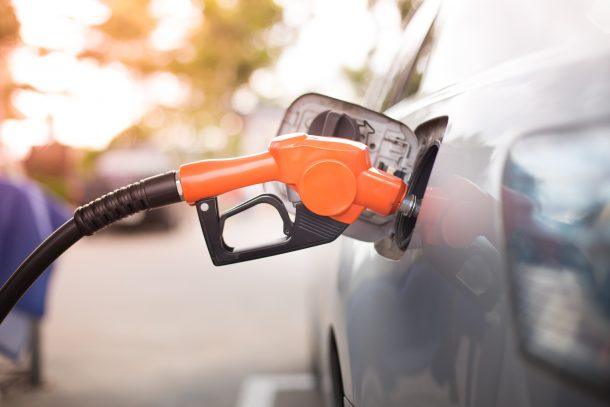

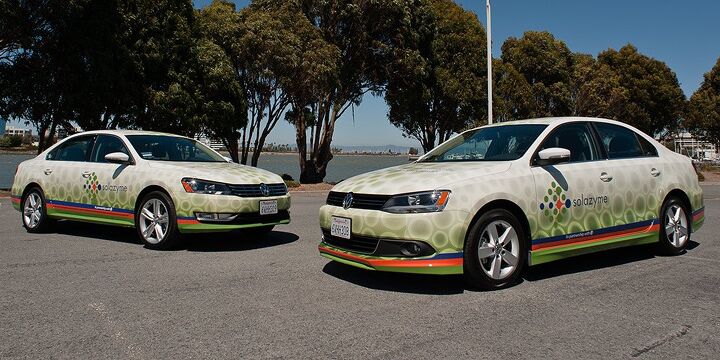



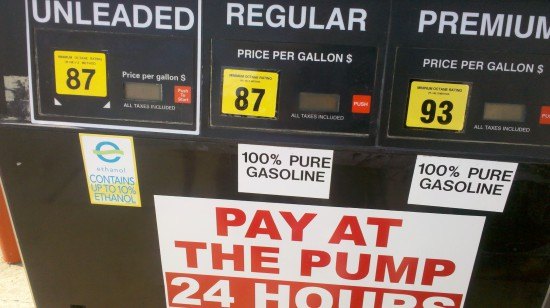










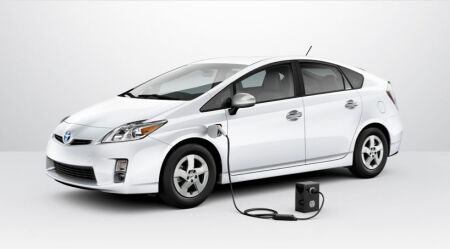




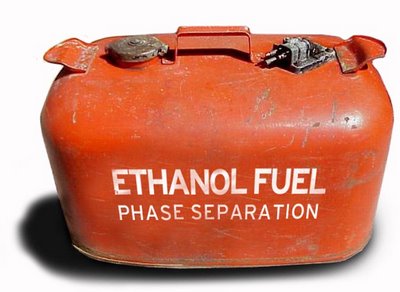
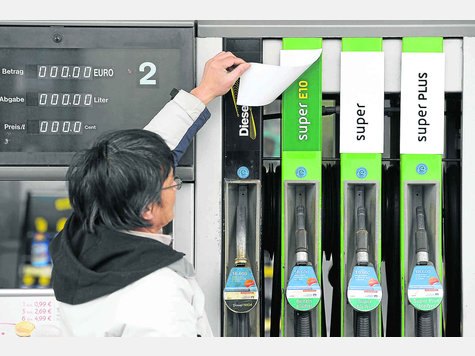

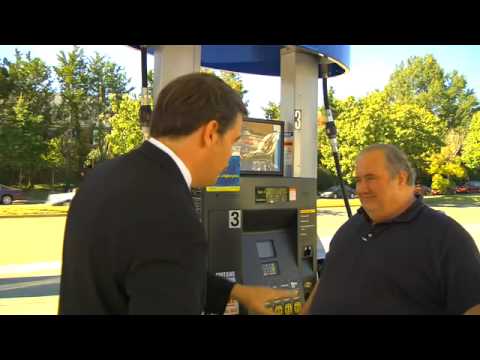

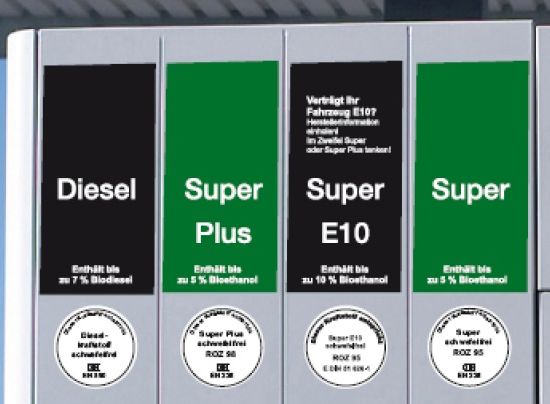






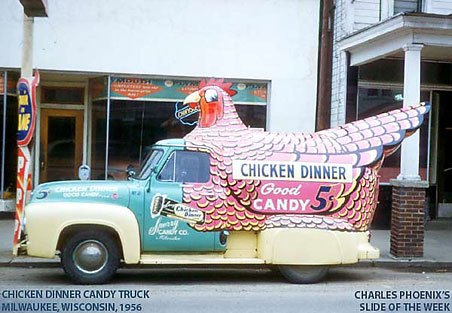



















Recent Comments